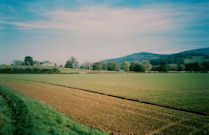
Figure 46: Ravery, looking towards Chevannes Farm
The river Méchet runs down from Mont Beuvray and joins the Arroux in the shadow of the prominent granite hill of Beaufort. In antiquity, this position would have been of strategic value, as its name suggests. Concentrations of finds were found both on the slopes of Beaufort, and in the field immediately below (this last still on the granite), as well as on the lower terrace at Le Ravery on the opposite side of the RN 81.
Following the discovery of material along its eastern edge, this relatively large cultivated field on the lower terrace to the south of the main road was linewalked on two separate occasions. Le Ravery occupies the angle formed by the confluence of the Méchet with the Arroux. In its northern corner, a concentration of sherds was found on what may be a ploughed-out platform, others came from across the field. A variety of fabrics was present, including many sherds in a badly abraded micaceous quartz-tempered fabric (B4a, see below). Some Roman tile, including tegulae, was also found in this field, though in a broad scatter without any notable concentrations.
Niaux (1991-2) reported finding prehistoric flint in this field, an observation corroborated by the recovery of our largest lithics assemblage. Twenty-five worked flints were collected from across the entire lower part of the field, slightly concentrated towards the centre. Diagnostic pieces included a Neolithic end scraper (Fig. 96, 5), a retouched Grand Pressigny 'dagger' (Fig. 96, 4) of late Neolithic/Chalcolithic date, a blade scraper, a side scraper and a double end scraper, together with a variety of flakes, some calcined.
The pottery from Le Ravery (UF 20, 32, 49)
No. of sherds 94; weight: 423g
This fairly large assemblage contains a range of Gallo-Roman coarse- and semi-finewares, but is most notable for the very high proportion of sherds in fabric B4a (71% by number; 87.2% when all B4 fabric variants are included). This is similar to Chevannes, but contrasts with a figure of just 2.3% at the nearby Roman site of L'Haut des Champs (Table 4). The date of fabric B4a is uncertain, with few forms present, but its rarity at other Gallo-Roman sites and the unusual forms in which it occurs (e.g. G(AV)2.1 and G(AV)2.2, Fig. 91, 84 and 85) - which cannot be paralleled in Gallo-Roman assemblages - suggest that it may be Late Antique or early medieval.
Two cultivated fields on the southern flank of Beaufort were walked under various conditions in both August and October. Half way up the relatively steep slope of the upper field was a slight platform or terrace, truncated by the recent cutting for the RN 81. Following the discovery of material along the southern edge of the upper field, this was linewalked twice. The lower field was only walked once.
A relatively large assemblage was recovered from these fields, in a wide variety of fabrics, with a concentration of sherds in the area of the platform in the upper field. Only a little tile was noted, but included tegulae. Two retouched flint flakes were also recovered, one from each field.
The pottery from Beaufort (UF 19, 35, 36, 48)
No. of sherds: 85; weight: 566g
This assemblage again contains a significant proportion of fabric B4a sherds (30% by number; 60% when all B4 fabric variants are included), although not as high as at Ravery or Chevannes. As already noted, the date of this fabric is uncertain, but the forms suggest it is late Antique or early medieval (e.g. G(AV)2.1, Fig. 91, 86). Other fabrics and forms at Beaufort, however, indicate Gallo-Roman occupation in the vicinity. The storage jar or dolium form (P(AV)12.2, Fig. 91, 87) is probably of 1st-century AD date, with flagon fabrics and forms, Dressel 20 amphora and Romanised coarsewares suggesting a similar date for activity. A sherd of Pascual 1 amphora and one of the coarseware fabric B2a hint that occupation may go back to the later 1st century BC. To what extent this material derives originally from the hilltop at Beaufort is uncertain, but the nature of this location and apparent evidence of anthropogenic features here implies activity on the summit. The similarities of the fabrics from Beaufort, Ravery and Chevannes, suggests they may form part of a larger settlement focus.
| Ravery: Linewalked (5.50 ha) | 20, 32, 49 | Fig. 91 Diagnostic ceramics Fig. 96 Diagnostic lithics (nos 4, 5) |
| Beaufort slope: Linewalked (1.70 ha) | 19, 36, 48 | Fig. 91 Diagnostic ceramics Lithics (not illustrated) |
| Beaufort south: Linewalked: 10m transects (1.00 ha) | 35 | No diagnostic ceramic forms Lithics (not illustrated) |
© Internet Archaeology/Author(s)
URL: http://intarch.ac.uk/journal/issue25/3/5.2.5.html
Last updated: Wed Oct 29 2008